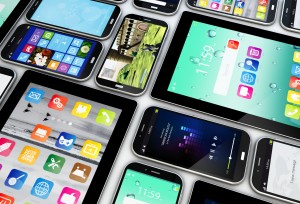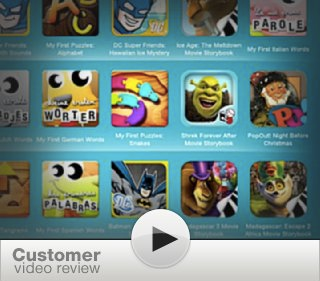Adventures in Mobile Screencasting
Or, what’s so #$^@ hard about capturing my tablet? Work, damn you, work!
 It’s an increasingly mobile world. At the time of this writing (March 2016), a full 25% of internet traffic is driven by mobile browsers. Unfortunately, the most popular mobile operating system in the world (iOS, which powers iPhones and iPads) tightly controls the functionality of apps they let onto their app store. As apps that capture your screen could technically be used to spy on peoples’ activity, screencasting apps have suffered from a blanket ban. Since the iOS currently enjoys nearly 63% of mobile market share, this is a huge hurdle.
It’s an increasingly mobile world. At the time of this writing (March 2016), a full 25% of internet traffic is driven by mobile browsers. Unfortunately, the most popular mobile operating system in the world (iOS, which powers iPhones and iPads) tightly controls the functionality of apps they let onto their app store. As apps that capture your screen could technically be used to spy on peoples’ activity, screencasting apps have suffered from a blanket ban. Since the iOS currently enjoys nearly 63% of mobile market share, this is a huge hurdle.
Things are slightly rosier on the Android side of things, but most of the screencasting apps for those devices require rooting the device (giving your apps access to the root folder of your device, the Android equivalent of jailbreaking). Doing this usually voids your warranty.
For most folks, there are two highly workable solutions. You can take the cheaper, software-based approach, and a pricier, hardware-based route.
The Software Approach
There’s a piece of software for both Mac and PC called Reflector, which effectively beams your screen to your computer via Apple’s Airplay technology, where you can capture it via your favorite screencasting tool. It requires a bit of processing power, so you’ll need at least an iPhone 4s or an iPad 2 if you want it to work. The only other issue is that it won’t show taps or swipes, but otherwise, it’s a really solid way to grab screen footage from any iOS device. I use it all the time.
Unfortunately, Reflector only broadcasts iOS devices, meaning Android devices are out. This leaves out the hardware-based route:
The Hardware Approach
I recently picked up a Kindle Fire HD tablet for my son’s birthday. I really liked the endless smorgasbord of children’s apps, books, and videos available through their FreeTime Unlimited program, and was quite drawn to their system for individually limiting “screen time” for books, apps, and videos. It seemed like just the right prescription for my little tablet addict. There are certain things I would change, but mostly, the little device has lived up to the hype. I wanted to capture a bit of footage to do a video review.
I was used to the draconian restrictions of Apple Computer in limiting what you could capture, but this is an Android device. Surely finding a decent screencasting solution for the Kindle wouldn’t be that hard, right?
Wrong. What an unbelievable nightmare it was. Even downloadable screencasting softwares for Android were out of the question. This was a branded Amazon device, and their store is even more restrictive than the Apple Store.
So I decided to pick up a bit of hardware to help me out, specifically the Elgato Game Capture HD. Of course, at the time, I had no idea whether it was even going to work for my purposes. Thankfully, there’s no egg on my face this week, as the review below explains.
Oh, and if you’re curious, the reason I wanted to screencast my Kindle to begin with was to post a review of the unit (specific to its FreeTime Unlimited feature and its appropriateness for special needs kids like my son. You can check that out here:

I hope you find these useful. As always, don’t hesitate to post a comment if you have questions or concerns.

 It’s an increasingly mobile world. At the time of this writing (March 2016), a full 25% of internet traffic is driven by mobile browsers. Unfortunately, the most popular mobile operating system in the world (iOS, which powers iPhones and iPads) tightly controls the functionality of apps they let onto their app store. As apps that capture your screen could technically be used to spy on peoples’ activity, screencasting apps have suffered from a blanket ban. Since the iOS currently enjoys nearly 63% of mobile market share, this is a huge hurdle.
It’s an increasingly mobile world. At the time of this writing (March 2016), a full 25% of internet traffic is driven by mobile browsers. Unfortunately, the most popular mobile operating system in the world (iOS, which powers iPhones and iPads) tightly controls the functionality of apps they let onto their app store. As apps that capture your screen could technically be used to spy on peoples’ activity, screencasting apps have suffered from a blanket ban. Since the iOS currently enjoys nearly 63% of mobile market share, this is a huge hurdle.